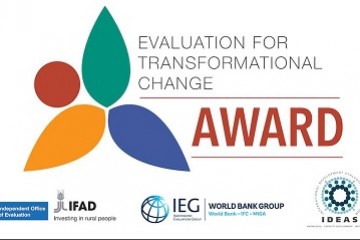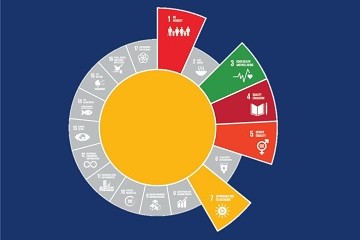Bringing biojet fuels to the market
The use of sustainable biojet fuels in the aviation sector has large potential to reduce its emissions. Current high prices for biojet fuels causes however that airlines cannot afford to buy large quantities of biojet fuels. This results in companies (mainly oil companies) having little incentive to invest, and consequently the cost reduction from learning effects and from scaling up production does not take place. Policy instruments are required to bridge current limitations. A recent study conducted by SQ Consult for IATA, the International Air Transport Association, benchmarks several combination of policy instruments that may help to bridge current limitations and narrow the price gap with conventional jet fuels. This newsletter discusses some of the study’s findings and their impacts to airlines in an international context.
How much does it cost to use biofuels in the aviation sector?
A 2013 study performed by the Midwest Aviation Sustainable Biofuels Initiative (MASBI) “Fueling a Sustainable Future for Aviation” shows that an economic incentive of US$ 2 per gallon of biojet fuel would be needed to be cost competitive with current fossil jet fuel price. This calculation assumes a relatively optimistic price of feedstock.
Our study corroborates these results and estimates that for a more conservative cost development of feedstock, the incentive needed would be of the order of US$ 2.7 per gallon of biojet fuel. A 3% blend would thus increase the blended jet fuel price by 2.5% if the underlying biojet fuel price is around 40 US$ per ton. Under these conditions, the US market would require incentives totalling US$ 540 million annually for each 1% of blending (on the basis of an annual consumption of 20 billion gallons of jet fuel a year by the US military and commercial aviation, MASBI report). A global blending of 1% would require annual incentives of the order of US$ 1.8 billion.
The relevant question from many industries is the likelihood of assumptions, e.g. feedstock price, technology cost, and the evolution of jet fuel price. Our research showed that the most sensitive assumption is the future price of feedstock. Price of feedstock is influenced by competing uses in many other industries (food, chemistry, biofuels for road transport, etc.).
What are the factors limiting the deployment of biojet fuels on a global scale?
The options to deploy cost-effective biojet fuels on a global scale are limited by several factors such as technical constraints, high production costs, price and competing uses for feedstock, production capacity, lack of policy incentives and the real potential of waste and residues.
| Limiting factor | How deployment is limited |
| High costs of production | In the absence of any economic incentive and with the current situation of interval-based production, production of biojet fuels is significantly more expensive than production of fossil jet fuel. |
| Price and competing uses for feedstock | Feedstock represents the largest share of the biojet fuel price, 50% to 90%. New competing uses appear constantly in the food, chemistry and energy industries. This drives the prices of traditional and less conventional feedstock towards commoditisation. |
| Potential of waste and residues as feedstock | Biojet fuels produced from waste/residues have higher greenhouse gas (GHG) emissions reduction potential; however their availability is limited, their potential difficult to unlock, and the pre-treatment needed for their use with the Fischer-Tropsch technology still needs technical maturation |
| Production capacity | Existing production capacity is limited. Synergies exist with second-generation biofuels developed for road transport, and both types of fuels could be produced in the same facilities. However, biodiesel for road transport often receives higher levels of subsidies. From an economic perspective, the production of biodielsel for the road transport over biojet fuels. |
| Potential for reducing emissions | Biojet fuel is technically possible only as drop-in fuels in the foreseeable future; therefore their potential to reduce emissions is limited to the drop-in share. This constrains the size of the potential market. |
| Non-uniform or lack of policy incentives | While incentives aiming to bring the price of biojet fuel closer to the price of fossil jet fuel are being introduced in some jurisdictions, they don’t exist in others. This situation may potentially create global differences in price and availability of feedstock and biojet fuel. |
Given this situation, successful deployment of biojet fuels is difficult to achieve with market forces alone. Policy instruments are required to bridge current limitations.
What type of policy instruments can help deploying biojet fuels at global level?
Several types of policy instruments are available and can be used for the deployment of biofuels in the aviation sector. Some of them are already used for the promotion of biofuels in the road transport. A full global benchmark of these policy instruments was researched by SQ Consult to determine their feasibility in the aviation sector.
| Type of instrument | Definition | Examples for the aviation sector |
| Command and control | Regulation establishing what is permitted and what is not permitted in a specific industry or activity. The command part establishes the obligations to be complied with, and the control part establishes the sanctions that result from non-compliance. | Blending and emissions mandates. They would need a flexible compliance design and be tradable across countries to create sufficient international scope. Airlines may potentially end up regulated under different types of mandates. |
| Economic | Using markets, price, and other economic variables to provide incentives to a specific industry or activity. | Taxes or taxes exemptions, charges, incentives, subsidies, public loans and emissions trading. These instruments should provide long-term certainty and avoid international incoherence. Ideally, these instruments shall be developed to maximize synergies with biofuels for road transport. International approaches that safeguard a level playing field for airlines are required. |
| Co-regulation | Recognising industry voluntary initiatives or programs as part of the public regulation. Especially useful when there is a need to regulate economic activities performed across the geographic borders of different countries. | Agreements by airlines associations setting targets and rules that are officially recognised by public regulation as governing rule. |
| They require extensive negotiations and finding agreement between conflicting interests from all participating stakeholders and governments. | ||
| Voluntary and collaborative | Voluntary and collaborative programs within the private sector or between the private and public sectors. | "Supply-push" (supporting R&D and demonstration of technologies) or "demand-pull" (changing market conditions like voluntary private procurement) measures. Cooperation between competitive sectors, such as road transport, bio-chemistry and the so-called bio-based hubs, would strengthen innovations and promote coherence. |
However, no one single type of instrument can produce relevant benefits if implemented alone. A well thought combination of instruments is needed to deal with all barriers. International regulation will most likely not be introduced simultaneously in all relevant countries either; therefore a long transitional period would be required for success.
What are the impacts of researched policy combination options under different scenarios?
Four combinations of policy instruments were researched and compared under a set of four market scenarios with different forecasts of jet fuel and CO2 prices. This analysis was further complemented with different levels for the evolution of feedstock price and different technology learning curves.
| Policy combination option | Short description | Impacts on the aviation sector | |
| Price driven | Direct financial support for R&D, production capacity build up, and feedstock for an optimal market start-up and global deployment of biojet fuels with a 2% blending mandate reached in a time horizon of 10 years (2015-2025). | This option shows that 50% of direct incentives for the construction of production plants (regardless feedstock/conversion technology) would be required for initial up-scaling. Additionally, for Camelina/Jatropha HVO biojet fuels up to 66% of subsidies to feedstock would be needed in the first 10 years of deployment (depending on the price of feedstock). The Fischer-Tropsch route would require less subsidies to feedstock (up to 40%), but more subsidies to technology development as Fischer-Tropsch plants are still expensive. | Impacts on the aviation sector |
| Obligation driven | Blending mandates as cornerstone instrument internationally. | This option does not take into account above financial burden which is transferred to airlines and ultimately to end users. Blending mandates cannot be applied upfront to a nascent market in which biojet fuel prices have not yet reached certain stability. Stability of prices usually comes after learning and certain up-scaling has already happened. Mandates should not be implemented as long as up-scaling and price stabilization at a competitive level has not been achieved by economic incentives alone. | |
| Co-regulation and carbon trading | International industry initiative to set its own blending targets and rules for accomplishment at supranational level, translated into national regulation. | In essence the economic incentives to make this option viable are similar to the price driven option, but the pace and place of the targets introduction would be first discussed and decided by the aviation sector (opposite to the obligation driven option in which those are established by governments). This option may also include an international trading mechanism for biojet fuels certificates (similar as RINs in the US or the biotickets in the Netherlands) and involve other sectors (such as road transport). | |
| This option can partially build on voluntary agreements and gives the aviation sector the possibility to demonstrate commitment and to receive economic support. The difficulty is the complexity of its negotiations as they involve different interests from several parties. | |||
| Voluntary driven | Voluntary agreements are set by the aviation sector itself. It is basically the business as usual case. | Voluntary agreements alone are not sufficient to break the vicious circle of market start-up and cost reductions. There will be airlines that lead the deployment of biojet fuels. Examples are the KLM Corporate programs, and procurement initiatives or the formation of strategic alliances. These types of initiatives can well exist next to the other policy options and have minimal financial risk. |
While all combinations of policy instruments would bring different advantages and disadvantages for the deployment of biojet fuels, the order of implementation of instruments is crucial. A market start-up will only happen if firm support to technology development and technology commercialisation is given (in the way of economic incentives). Only then, other policy instruments will be effective in shaping the biojet fuel market and its evolution. It is especially relevant to mention that blending mandates would cause more harm than benefits if they are applied in an immature market when biofuel prices have not yet reached stability.
Key issues to take into account for realising competitive deployment of biojet fuels
- Supply of feedstock at sufficient quantities and at low cost is needed. The increasing competition for other uses puts pressure on feedstock price (food, feed, chemicals, power, and road transport).
- There is no clear winning technology at this moment in time. Economies of scale benefits will be enhanced with continued research and development.
- Significant incentives are expected to be competitive until economies of scales effects have reached a sufficient level. A well thought combination of instruments is needed to deal with all barriers.
- A consistent international framework is very much required to maintain a level-playing field and avoid strongly disturbed and fragmented markets.
- Regulation cannot be seen separately from policy developments in other related sectors (agriculture, forestry, bio-based economy, road transport).
- Administrative barriers can also limit the production and use of biojet fuels substantially. It is therefore important to also develop international technical standards and sustainability standards from the start.




